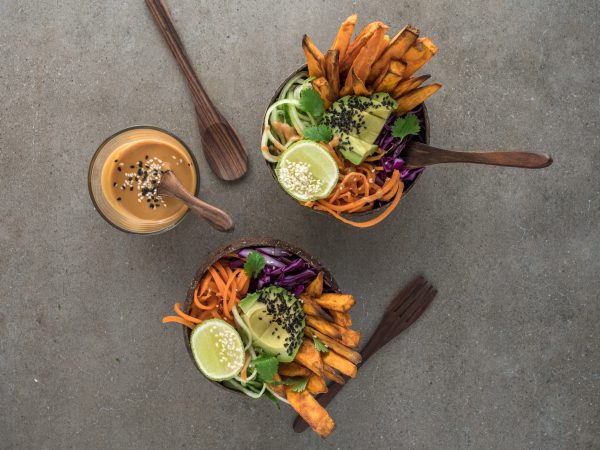Last Updated on May 28, 2023
Vietnamese cuisine, also known as the “Saigon kitchen,” is renowned for its harmonious blend of fresh herbs and bold condiments, achieving a great harmony of aromatics, heat, sweetness, and sourness in every dish. From the traditional staples to the more modern fusion dishes, the vibrant and complex flavors of the Saigon kitchen are sure to make you oomph at least a few times.
But what if you want to bring that adventure to your own kitchen? The good news is that Vietnamese food is one of the most approachable world cuisines for home cooks. With the right tools and ingredients and a bit of practice, you can definitely create authentic Vietnamese dishes at home.
So let’s explore what makes this popular cuisine unique and talk about what you need to master your pho, goi cuon, and bun cha.
A Dummy’s Guide to Vietnam Food

Vietnamese cuisine is a unique blend of flavors from East and Southeast Asia with a hint of Western influence, making it captivating yet difficult to define.
In Andrea Nguyen’s words – an Asian cuisine expert and author you should definitely check out if you’re into Asian food – “In what other cuisine do you find baguette sandwiches stuffed with banana leaf-scented cold cuts, garlicky liver pâté, cucumber, pickled daikon, and carrot, cilantro, and chiles?”
Vietnamese cuisine is full of intriguing and unique combinations like these. It’s a great starting point for those looking to try new and diverse flavors from world cuisines. With a variety of ingredients, such as tofu, beef, and shrimp, there is something to appeal to everyone at the table.
Harmonize the Flavors
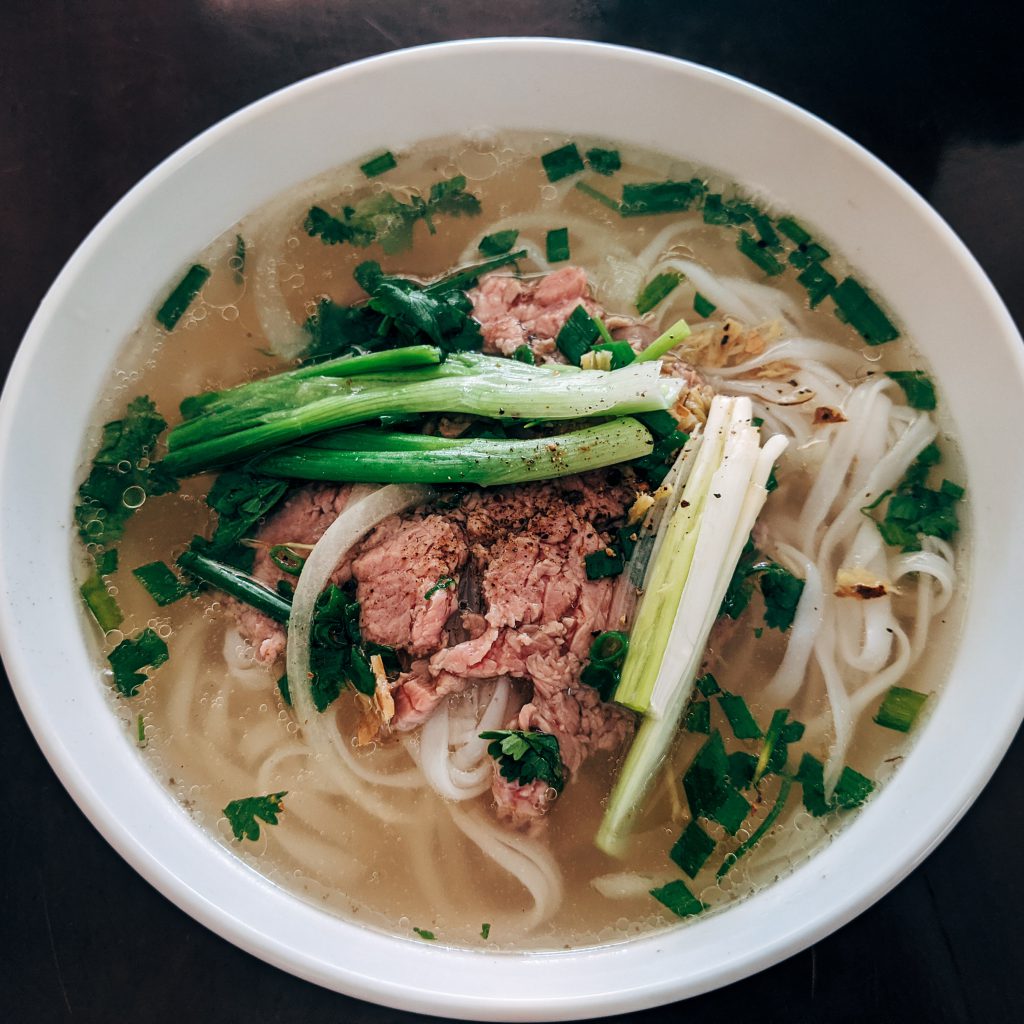
What makes Vietnamese food unique is its use of a variety of fresh herbs and pungent fish sauce in almost every dish, creating a balance of aromatics, heat, sweetness, sourness, and fish-sauciness lacking in other cuisines.
Some say this balance of flavors is similar to the concept of yin and yang, where the sweet and salty, cool and warm, fresh and fermented are brought together to create a dynamic dish that works on multiple levels.
To make your way towards cooking Vietnamese food like a pro, the first thing to do is to introduce yourself to using tangy and sweet ingredients together, such as fish sauce, tamarind extract, honey, brown sugar, and fresh lemongrass.
Eat Like a True Vietnamese
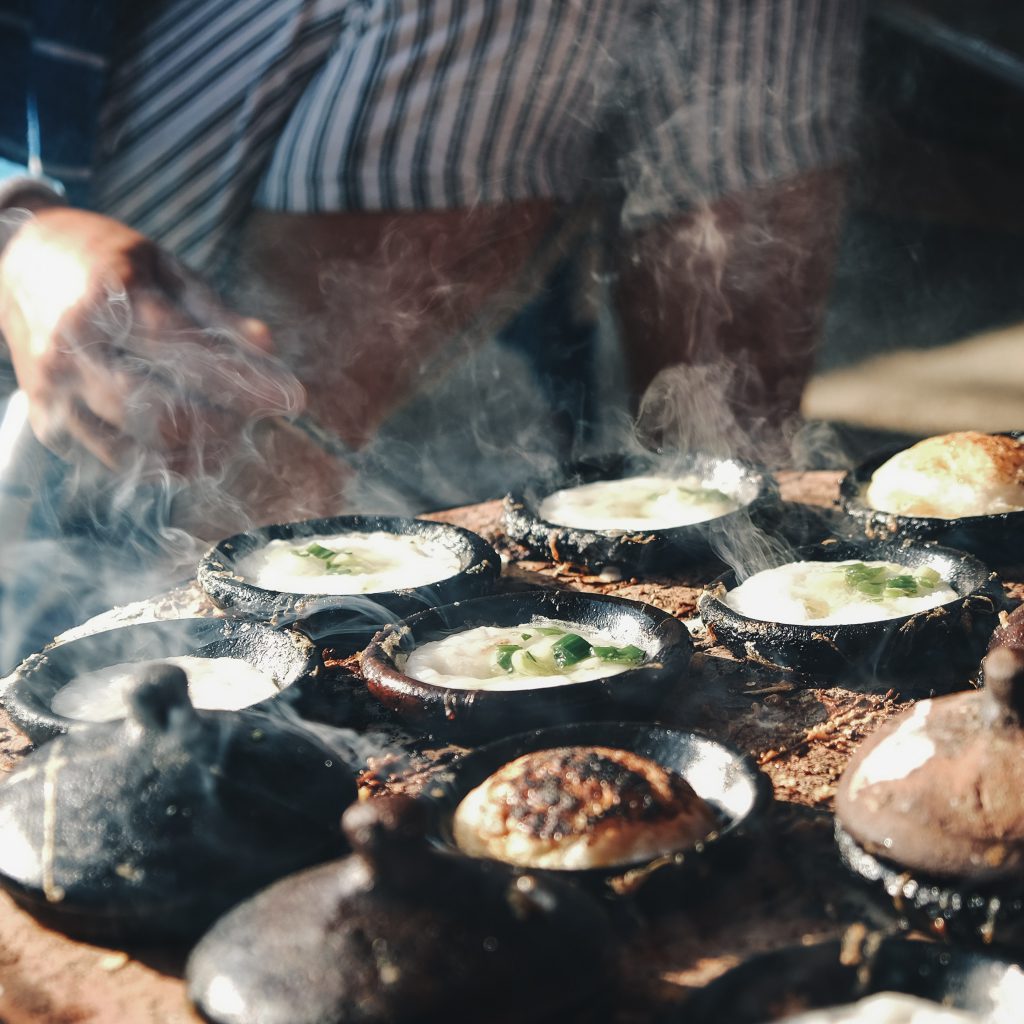
Communal dining is a fundamental aspect of Vietnamese and other Eastern and Southern Asian cultures. In the West, Vietnamese tables are usually filled with lots of side dishes.
One key difference between Asian and Western dining, in general, is how they set the table. In Western dining, tables typically feature separate plates for each person, which is not surprising for a culture that puts a strong emphasis on individualism.
On the other hand, in most Asian dining, tables are often filled with a variety of side dishes, similar to the experience of dining at a Korean barbeque restaurant, meant to be shared and enjoyed by everyone at the table.
This is not to say that one cannot dine Vietnam food alone, but it reflects how the cuisine places great value on socializing and the communal experience of sharing a meal.
Keep the Key Ingredients Around
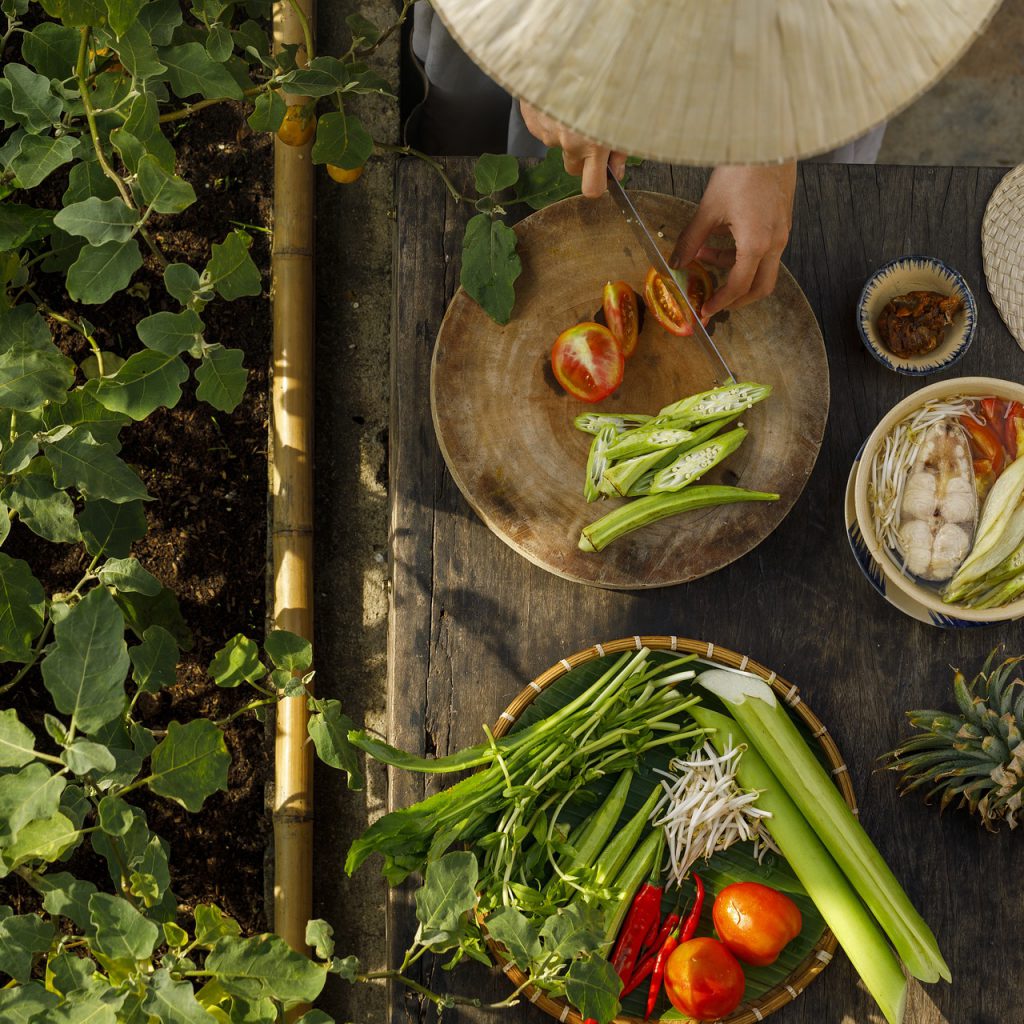
Cooking Vietnamese cuisine at home can be a blast, but let’s be real, you can’t make Pho without the right ingredients. Otherwise, it’s just soup. Sure, you can make do with what you already have in your pantry, but nothing beats the real deal.
Today, it’s relatively easy to access a wide variety of ingredients from all over the world, whether through your local Vietnamese market or a large grocery store such as Kmart. What are some authentic ingredients that’ll bring a touch of authenticity to your dishes? Here’s a list for the beginner Vietnamese cuisine enthusiast:
Fish Sauce
Fish sauce is a staple in Vietnamese cuisine and is also widely used in many other Southeast Asian countries, such as Thailand, Laos, Cambodia, and the Philippines. It’s made by fermenting fish, usually anchovies, with salt, for several months. The resulting liquid is a strong, salty, and fishy-flavored sauce that’s also slightly sweet.
You can use fish sauce to season soups, sauces, marinades, and dipping sauces. For instance, one famous recipe that benefits from this sauce is the famous Vietnamese noodle soup pho. It’s also commonly used as a table condiment, much like soy sauce.
Nuoc Mam
Nuoc mam is similarly made by fermenting fish, usually anchovies, with salt for several months. However, nuoc mam has a sweeter and milder flavor compared to regular fish sauce.
It’s used as a dipping sauce, marinade, and seasoning in a variety of dishes and as a table condiment, like soy sauce.
Long Grain Rice
In Vietnam, a bowl of rice is typically served as a side dish to accompany meals. It’s often steamed and sometimes aromatized with garlic or onion.
The most frequent type of rice in Vietnam is long-grain rice. It’s the opposite of sticky rice and has significantly less starchiness. The result is a chewy-firm, fluffy rice, each grain standing distinct from the other when cooked.
Dried Shrimp
Made by sun-drying small, whole shrimps and then grinding them into a fine powder or leaving them in larger pieces, dried shrimps add a rich, savory flavor and a hint of sweetness to a wide range of dishes.
Fine Shrimp Sauce
Also known as “mam tom,” fine shrimp sauce is a type of fermented shrimp paste. It’s made by fermenting small, whole shrimp with salt and sugar and then grinding the mixture into a smooth paste. The fermentation process gives the sauce its characteristic deep, savory, and slightly sweet flavor.
Oyster Sauce
Oyster sauce is a popular condiment in Vietnamese cooking, as well as in Chinese, Thai, and many other Southeast Asian cuisines. It is made by simmering oysters in water until the liquid reduces to a thick, flavorful sauce. The oysters release their natural sweetness and umami flavor into the liquid, creating a rich, savory sauce with a slightly sweet undertone.
Hoisin Sauce
Hoisin sauce is a thick, sweet, and savory sauce that is commonly used in Vietnamese and Chinese cuisine. It is made from a mixture of soybeans, sugar, vinegar, garlic, and spices. It has a smooth, syrupy texture and a sweet and salty flavor with a hint of spice.
Banana Leaves
Banana leaves are used as a cooking wrap in many Southeast Asian countries, including Vietnam. They are used to line steamer baskets, wrap food for grilling or roasting, and make parcels for steaming.
The leaves impart a subtly sweet and grassy flavor to the food when cooked. They’re also known for their natural anti-bacterial properties. You can use banana leaves to wrap a variety of foods, such as sticky rice, fish, meat, and even desserts. They are also used to serve food in traditional Vietnamese settings.
In Vietnam, banana leaves are widely available in the markets and are often sold fresh or frozen. If you get frozen ones, simply defrost some when you need them. If you get fresh banana leaves, make sure to wash and wipe them dry. And if they are dry or brittle, briefly steam them to soften them up.
Galangal
Galangal is a root vegetable that is closely related to ginger and turmeric. It is commonly used in Southeast Asian cuisine, particularly in Thai and Vietnamese cooking. It has a slightly sweet and peppery flavor with a hint of pine and citrus notes, but it’s a bit more pungent and sharper than ginger.
Ground, Steamed Mung Beans
Ground, steamed mung beans, also known as “che” in Vietnamese cuisine, are a popular dessert or snack. They are made by grinding steamed mung beans into a paste, which is then sweetened with sugar and sometimes flavored with pandan leaves or vanilla.
The mixture is then steamed again and often served with a topping of coconut milk or sesame seeds. It is a traditional and popular sweet treat in Vietnam that can be eaten warm or cold.
Once you understand the key ingredients, it’s important to have the proper tools to bring these flavors to life in your kitchen. Here are the necessary tools to accompany you on your journey toward the best Vietnamese dishes.
Must-Have Kitchen Tools for Vietnamese Cooking

Some useful tools include a sharp knife for cutting and slicing, a ladle and spatula for stirring and serving, and, for extra authenticity, a set of chopsticks for eating.
We assume must-have tools like a sharp knife, a spatula, and a ladle are already present in your kitchen. But to give your best to your Vietnamese dishes, you need a few specialty additions beyond these staples.
1. Wok
A wok is a versatile and commonly used tool in Vietnamese cooking for stir-fries, deep-fries, boiled dishes, and even steams. The round shape and sloping sides of the wok make it easy to toss and move ingredients around, ensuring that they cook evenly. Its high sides also make it easy to prevent splatters when deep-frying. The wok is ideal for dishes like stir-fried noodles, fried rice, and deep-fried spring rolls.
What to Look for When Shopping for a Wok?
When it comes to woks, carbon steel is the most popular choice among cooks. It’s relatively inexpensive, lightweight, and heats up quickly due to its low heat capacity. However, carbon steel woks can be a bit trickier to season than those made of cast iron. Seasoning a wok, or carbonizing the cooking surface, is essential to prevent food from sticking and to remove metallic tastes and odors.
Carbon steel woks come in a variety of prices, styles, and quality levels. The cheapest options are often stamped from a single piece of steel and can be more prone to deformities and hot spots.
Higher-quality mass-produced woks are made of heavy gauge steel and are either machine-hammered or spun by machine.
The best quality woks are handmade, pounded into shape by hand from two or more sheets of carbon steel, and shaped into the final form by a ring-forming or hand-forging process. These handmade woks tend to be more durable and provide a better cooking experience.
So, when shopping for a carbon steel wok, it’s important to consider the quality and thickness of the steel to ensure you get the best cooking experience.
2. Mortar and Pestle
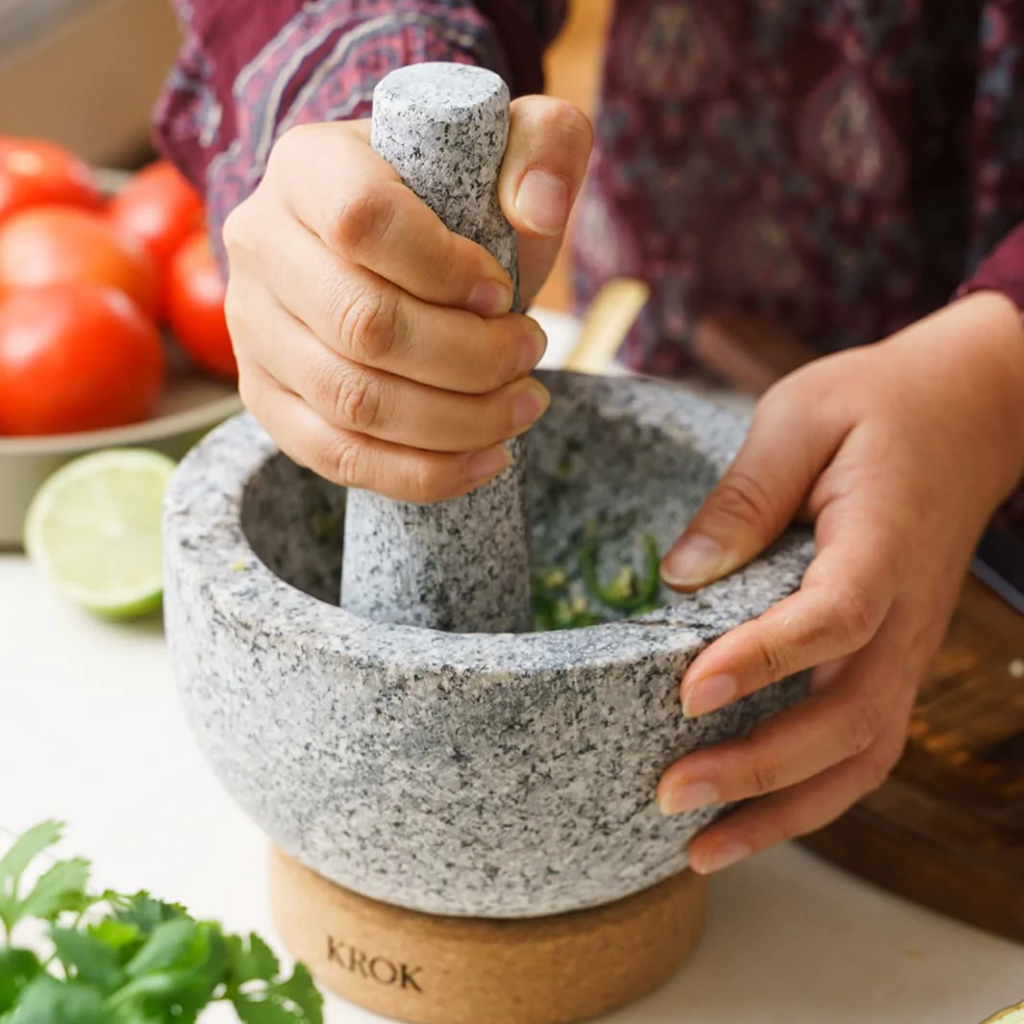
A mortar and pestle is an essential tool in traditional Vietnamese cooking for crushing and grinding herbs, spices, and other ingredients. It is commonly used to make pastes and marinades for meats and seafood, as well as to crush and grind herbs such as lemongrass, ginger, and garlic.
The mortar and pestle is also used to make traditional condiments such as chili sauce, fish sauce, and nuoc cham.
Crushing and grinding ingredients by hand releases the natural oils and flavor of the ingredients that can’t be replicated with a food processor. It is an important tool in creating vibrant and complex flavors characteristic of Vietnamese cuisine.
If you’re looking for a mortar and pestle set but don’t know where to start, check out our guide to choosing the best mortar and pestle.
3. Grill Pan
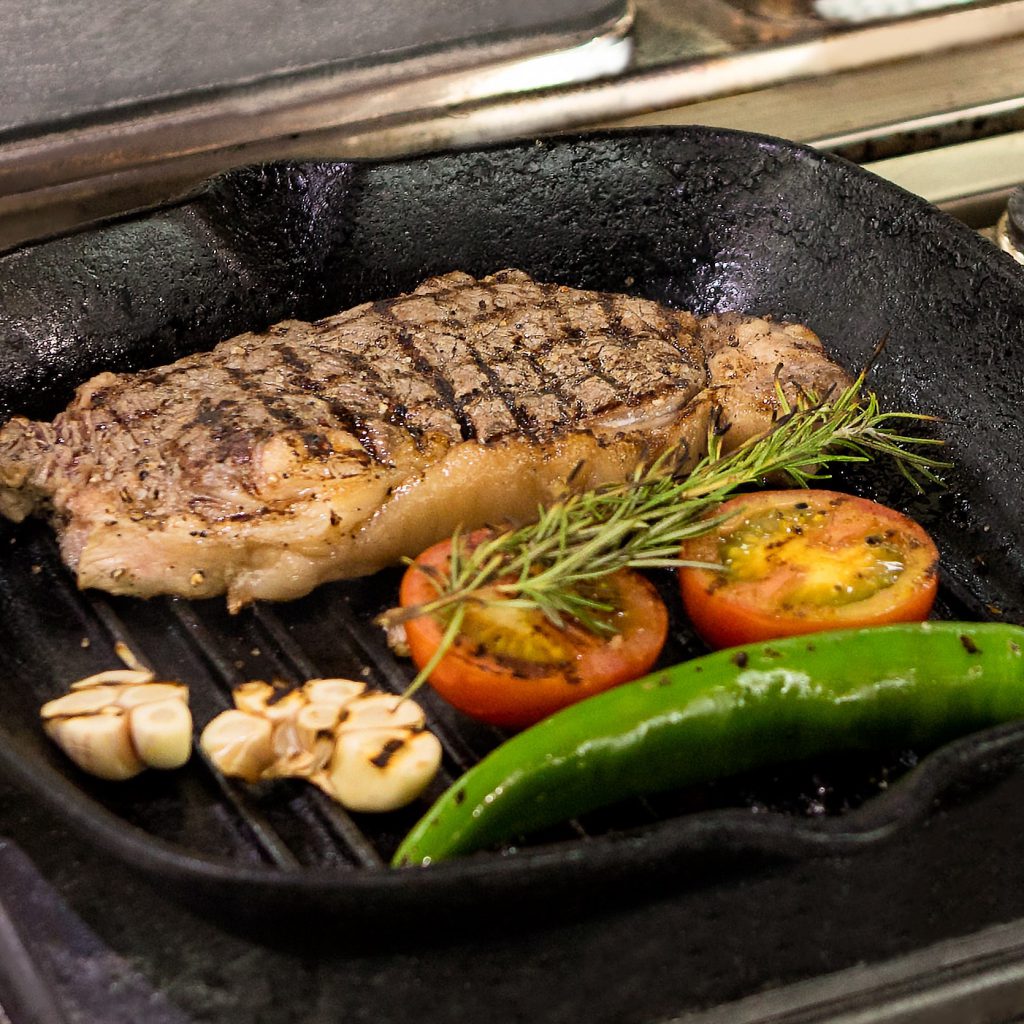
Smokey and savory grilled dishes are a staple in Vietnamese cuisine. While grilling outside can be a great experience, it’s not always possible for everyone. That’s where a grill pan comes in handy, which can help you achieve similar results inside your kitchen.
A grill pan is a versatile cooking tool that allows you to prepare traditional Vietnamese dishes, such as bun cha, nem nuong, grilled, seafood, and vegetables.
A grill pan is a flat-bottomed pan with ridges on the surface, which mimic the char marks of a grill. It can be used on a stovetop, making it a convenient option for those without access to an outdoor grill.
The ridges on the surface of the pan help to drain away excess fat and oils, resulting in healthier food with a nice grilled flavor. Cooking with a grill pan, you don’t need to worry about the outdoor weather conditions or filling your home with smoke, making it a perfect option for year-round grilling.
4. Steamer

Steaming is a gentle cooking method that preserves the natural flavors and nutrients of the food. Vietnamese meals are often highlighted with steamed rice, steamed buns, seafood, dim sum, and dumplings.
In Vietnamese cuisine, a steamer is also used for cooking dishes like banh ban, buns stuffed with a mixture of meat and vegetables, steamed rice cakes, and banh cuon, a dish of steamed rice rolls filled with meat and mushrooms.
A steamer can be made from bamboo or metal. Some steamers stand by themselves, and others are commonly used in conjunction with a wok or a pot with a lid.
5. Cleaver
There’s nothing a chef’s knife can’t achieve with experienced and dedicated hands. But some tools open up new techniques that make cooking fun and novel.
A cleaver is used for a variety of tasks, such as chopping, mincing, and crushing ingredients. It’s also used for cutting meats and fish and crushing garlic and ginger.
The weight and shape of the cleaver make it a useful tool for chopping through herbs and bones. Plus, the flat side of the blade can be used for tenderizing meats and crushing herbs. Since Vietnamese cuisine incorporates a lot of meats and herbs, a cleaver can enhance your cooking experience when tackling traditional recipes.
6. Various Small Bowls and Plates
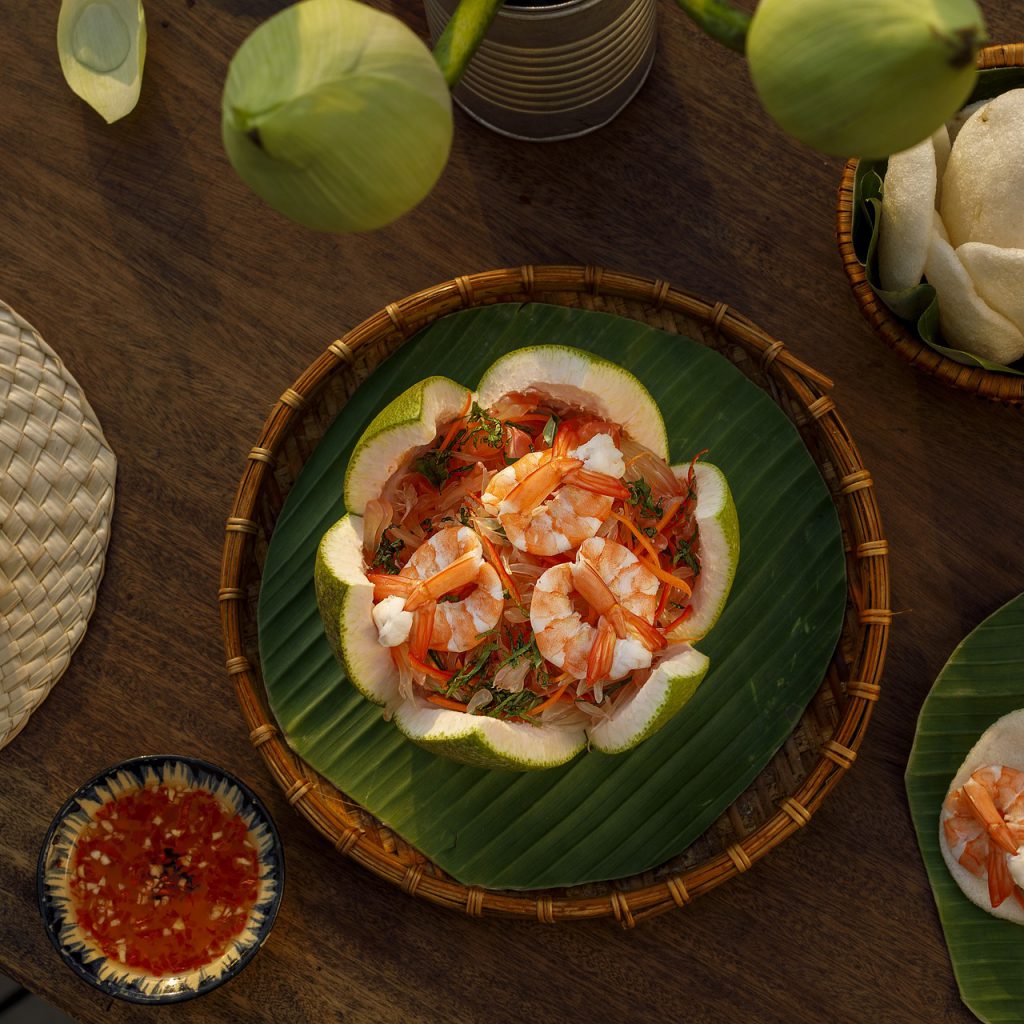
A true Vietnamese table is full of condiments and sides, so diners can mix and match different ingredients to create their own perfect bites. Spring rolls, fried wontons, pickled vegetables, and fresh herbs are typically served with various dipping sauces and garnishes.
Additionally, small bowls and plates are used to serve traditional condiments such as fish sauce, oyster sauce, or chili sauce. For this purpose, you need a set of small bowls and plates— and, of course, ramekins.
Over and Out!
From a trusty rice cooker to a sturdy wok and a handy mortar and pestle, having the right tools on hand can make all the difference in bringing out the authentic Vietnamese flavors and textures of this flavorful cuisine.
And if you’re truly passionate about Vietnamese cooking, consider cultivating your own herbs in an indoor kitchen garden. Some of the more unique herbs used in Vietnamese cuisine, such as cilantro, fish mint, Vietnamese balm, rice paddy herb, and sorrel, can be difficult to find at the supermarket. By growing your own batches, you’ll always have a fresh supply of these flavorful aromatics at your fingertips.








